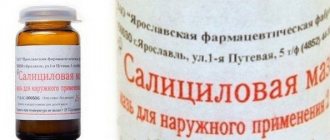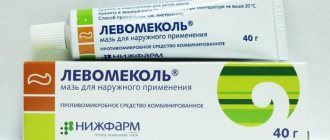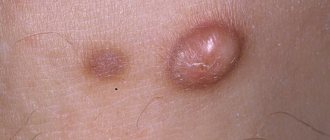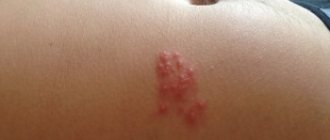Why do boils appear in the groin area?
If the outflow of the contents of the sebaceous gland surrounding the hair follicle is disrupted, an abscess often forms in the area where it is localized. An abscess can also occur due to the penetration of bacteria into the hair follicle. The causative agent of the infection is often white or aureus Staphylococcus.
Photo 16 – A boil in women may appear due to the penetration of bacteria
Already at the initial stage of the disease, inflammation of the hair follicle and nearby tissues occurs. Initially, a boil may resemble a harmless pimple, but after a few days the area of suppuration increases significantly, which causes stretching of the skin, itching and pain. The bulb is filled with pus, a boil is brewing and surgical treatment is required, involving puncture of the abscess and extraction of purulent masses.
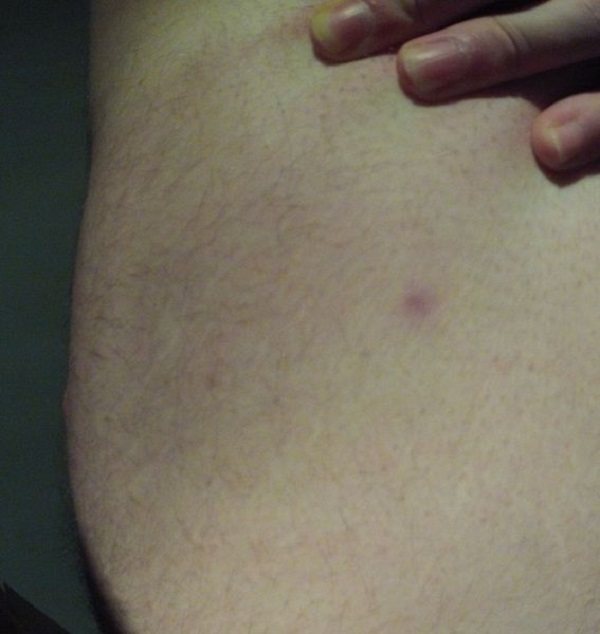
Photo 17 – Initially, the boil resembles a pimple
Contacting a specialist will help prevent negative consequences and speed up the recovery process. A boil in the groin area in women can appear for a number of reasons, including hormonal imbalances.
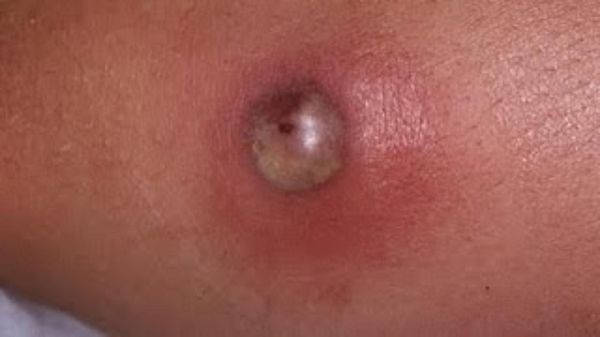
Photo 18 – Female hormones can affect the appearance of a boil
In this case, treatment with antibiotics should be carried out in conjunction with hormonal therapy. Often, boils in women can occur on certain days of the cycle, which is associated with increased production of skin secretions, decreased immune functions, etc.
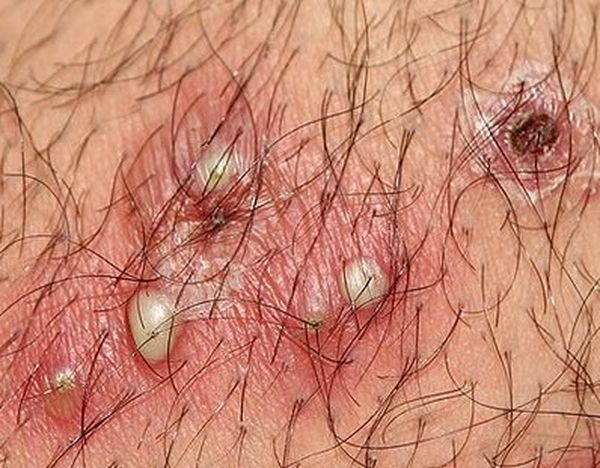
Photo 19 – Women may experience boils on some days of the cycle
How to treat a boil and what are the reasons for its appearance - a specialist will explain after the examination. Additional examination and testing may be required.
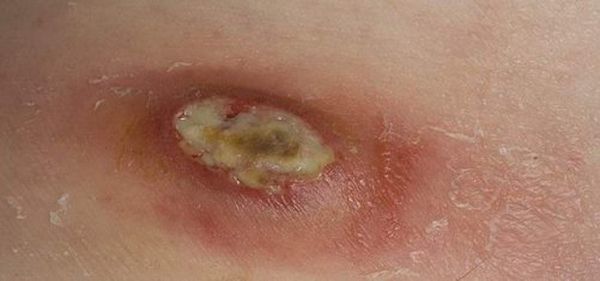
A boil in an intimate place is a very common occurrence, as it usually appears in places where the skin is exposed to high humidity. People also call them boils, which are a purulent formation that grows and matures over a certain period of time.
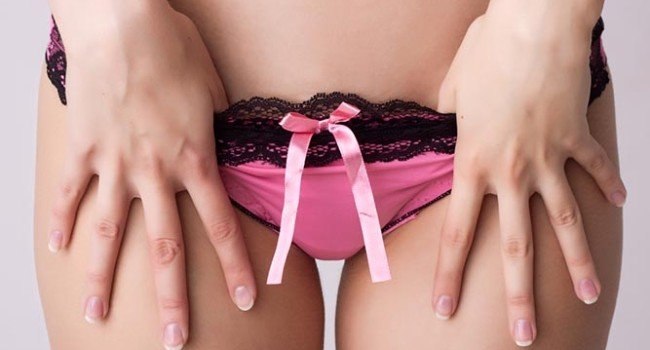
If a boil appears in the groin area, you should start treatment immediately
The boil stops bothering and hurting only after spontaneous opening. It is necessary to begin treating it as quickly as possible to avoid negative consequences.
Its most common location is where hair grows. According to doctors, the cause of the boil is white or golden staphylococcus, which provokes an inflammatory process in the hair follicles of the skin.
Typically, these bacteria live in the body of any person, and are active only under favorable conditions.
It is important to know! If you do not start treating the boil in time, then an abscess and general blood poisoning may occur in the sick person.
The reason for the active reproduction of this bacterium may be:
- Weakened immunity, when the human body is unable to repel a bacterial attack.
- Lack of basic hygiene amenities in the apartment.
- Dirty skin contributes to the appearance of a boil, for example, on the labia. Often a boil appears after a long journey, when hygiene rules have not been followed for a long time.
- Constantly wearing tight and synthetic underwear (greenhouse effect), which rubs the skin.
- Hypothermia or drafts can cause furunculosis.
- Increased sweating, because in high humidity all bacteria thrive. In such a situation, it is recommended to use drying powders (talc, etc.).
- Impaired metabolism in a woman’s body, improperly balanced nutrition; lack of vitamins (especially A and C).
- Endocrine system disorders, liver or kidney diseases.
- The presence of chronic diseases: tonsillitis, diabetes mellitus, intestinal dysbiosis, cholecystitis, etc.
- Hormonal processes in the female body - often on certain days of the cycle the production of skin secretions increases, which, with reduced immunity, contributes to the formation of an abscess.
- Accidental cuts during depilation in the groin area in women. In the absence of disinfection, bacteria multiply, resulting in a boil.
- The appearance of a boil on the inguinal lip also occurs with inflammation of the Bartholin gland, with infectious sexual diseases (trichomoniasis, gonorrhea).
Reasons for appearance
Any boil is an infectious inflammatory process localized in the hair follicle and surrounding tissues, including the sebaceous glands. It is caused by Staphylococcus aureus, which is found on the skin of most people, and some are carriers of the microbe in the nasopharynx.
Factors predisposing to the appearance of boils in the groin are as follows:
- intense hair growth, which means an abundance of follicles;
- an abundance of sweat glands, which means increased hydration;
- lack of ventilation;
- compression by underwear, tight-fitting jeans;
- natural discharge from the genital tract in women;
- urine entering the genitals of women during urination;
- pathological discharge in men and women with sexually transmitted diseases;
- menstruation (blood is an excellent breeding ground for microbes);
- increased friction when walking;
- microtrauma during sexual intercourse;
- shaving the intimate area;
- insufficient genital hygiene;
- intolerance to certain types of pads, tampons, chemical intimate hygiene products.
The role of risk factors is increasing:
- in persons with hormonal disorders;
- unhealthy diet with a predominance of simple carbohydrates and fast food;
- with endocrine pathology (diabetes mellitus);
- hypothermia;
- with decreased immunity.
Boils in the groin are of particular importance in pregnant women due to limited treatment options.
The main factor causing the appearance of a boil on the genitals is bacterial infection of the body.
Normally, up to 30% of staphylococci can live on human skin. The appearance of a boil indicates a quantitative change in pathogenic microorganisms up to 80-90%.
A number of factors can provoke this:
- Insufficient hygiene. The intimate area, be it the groin area (perineum), genitals, or mammary glands, most often requires hygiene procedures. The reason for this is excessive sweating, the presence of skin folds, and discharge from the genitals.
- Weakening of the immune system due to viral and bacterial diseases. During a cold, all efforts are aimed at eliminating the virus, and a person becomes more vulnerable to harmful microorganisms. Often, along with a runny nose and cough, purulent inflammation appears on the body. They can either precede the illness or appear during the illness, after recovery.
- Endocrine dysfunction. The recognized cause of furunculosis is diabetes. The disease can occur in a latent form, and often boils become a signal for controlling blood sugar levels. Any hormonal disorders, changes in the amount of biologically active substances against the background of menopause and adolescence can contribute to the appearance of pustular lesions.
- Lack of vitamins, poor or unbalanced food. Resistance to bacterial attacks is reduced due to a deficiency of B vitamins, ascorbic acid, vitamins A and E. Fast food and processed foods cannot fully satisfy the need for vitamins and minerals.
- Liver dysfunction. All the “charms” and hardships of the progressive age fall on the body’s main filter. Viral diseases, bacteria, toxins, harmful nitrate compounds are work for the liver. If the organ is unhealthy, it is unable to fully cope with blood purification. The result is ulcers on the body.
- Hypothermia. Our ancestors also noticed that chiryak often appears after hypothermia, both local and general. Modern medicine confirms this fact, and, like the older generation, does not recommend “sitting in the cold.”
- Oncological diseases. Malignant tumors are often accompanied by furunculosis, including in the intimate area. Chemotherapy and the fight against cancer cells significantly affect defensive functions.
- Skin injuries, previous surgery. An open area of skin that has not been treated with disinfectants is simply a green traffic light for staphylococcus. The perineal area is an area that is often subject to injury during shaving and sexual intercourse. In the summer, people often rub the skin between their legs due to excessive sweating, and this area becomes a threshold area. Surgeries reduce the body's resistance, thereby allowing staphylococcus to multiply.
A single boil is not a reason to panic and look for serious pathological ailments.
Frequent and multiple inflammations should be a signal to consult a doctor.
An abscess most often occurs in places where sebaceous glands accumulate, in areas that require more careful hygiene. Often there are boils on the genitals, breasts, and buttocks.
Subcutaneous discomfort appears first. Pain and swelling at the site of the future boil increases over several days. Redness and burning accompany the formation of an abscess.
The peculiarity of boils in intimate places is significant pain due to the presence of many nerve endings. The pain does not subside until the boil opens.
If the boil is single, then usually it does not change the general condition. However, large or multiple ulcers can cause fever, general malaise, and headache.
Antibiotics
Treatment with antibacterial drugs should be used if the patient’s condition worsens significantly, the symptoms of which are:
- increased body temperature, chills, nausea, heaviness and pain in the head;
- severe enlargement of the lymph nodes located in the woman’s groin;
- spread of boils to neighboring areas of the body.
Such symptoms indicate the spread of staphylococcal infection further throughout the body, which is a threat of furunculosis becoming a chronic form of the disease.
Most often, the doctor prescribes Dicloxacillin (an effective drug against staphylococci), less often - Tetracycline or Erythromycin.
Read the new article in the section:
Gallstone disease: treatment without surgery and diet
Stages of development and symptoms of the disease
In accordance with the stages described above, the pain intensifies and the temperature rises. It is worth noting that, regardless of the number of ulcers with holes, each of them does not have necrotic cores. Often, patients with hidradenitis inguinalis complain of headaches and feverish attacks.
The disease can involve subcutaneous fatty tissue, in which case phlegmon is associated with hidradenitis. If lymphatic vessels are involved in the affected area, lymphadenitis develops.
In the chronic form of hidradenitis, affected lesions are noted that are at different stages of progress. Lack of medical care for chronic hidradenitis sometimes resulted in death.
Most often, the abscess becomes a painful, compressible mass that is red in appearance, warm to the touch, and soft.
- • Most will continue to get worse without treatment. The infection can spread to the tissue under the skin and even into the blood.
- • If the infection spreads into deeper tissues, a fever may develop and the person may begin to feel unwell.
Possible complications of the disease
Complications after boils in a woman occur due to:
- breaking through the abscess inside;
- ignoring the symptoms of the inflammatory process of intimate localization;
- injury to the formation of intimate localization and infection during self-medication.
Complications may include:
- furunculosis of the labia;
- phlegmon;
- sepsis;
- abscess.
The symptoms and the very location of the boil in an intimate sensitive place can put a woman in a difficult situation. She is simply embarrassed to contact a specialist. However, self-medication can be dangerous and lead to disastrous consequences.
The article has been reviewed
by the site editors
How to recognize a boil?
A furuncle, or, as it is often called, a boil, is an inflammatory process that affects the hair follicle, which is located as close as possible to the sebaceous gland. Inflammation is caused by Staphylococcus aureus bacteria; in rare cases, other types of microorganisms can also be causative agents. At the initial stage, a boil in a woman’s groin resembles an ordinary pimple, but only in this case the course of the disease is much more complex and painful.
Boils can appear on the chest, back, legs and thighs, but those located in the groin are considered the most difficult. At the first signs of this kind of rash, it is better to seek qualified help, because it is often accompanied by serious pathologies. If the boil begins to fester, this may indicate that a virus or sexually transmitted disease has appeared in the body.
Diagnostics
The diagnostic range of methods is small, since clear symptoms show the specifics of the disease. Differentiation of the diagnosis of “hidradenitis inguinalis” follows from furunculosis. This requires a medical examination and palpation of the lesions. The similarity of the diseases will lie in the hyperemic area, the discharge of purulent masses, but it is enough not to see or palpate the necrotic rods to declare that furunculosis is not in favor.
With colliquative tuberculosis, hidradenitis will differ in the duration of the disease (in colliquative tuberculosis, the development of pathology is slower) and the degree of pain in the nodes. In tuberculosis, red-blue nodes do not cause pain during touching and palpation.
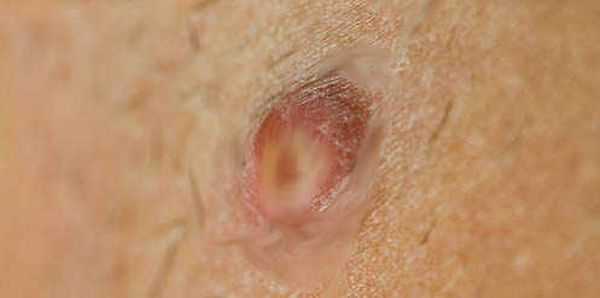
Below we will tell you which doctor to contact if you have hidradenitis in the groin.
Treatment of furunculosis in women
Antibiotic therapy
If a boil appears in the groin of women, treatment is prescribed using one of the following drugs:
- "Methicillin" (i.m.).
- "Erythromycin".
- "Tetracycline".
Therapy lasts at least a week, after which it is necessary to take a break of about 5 days and repeat taking antibiotics again. There should be up to 3 courses in total. To make the treatment as effective as possible, Sulfadimethoxine, vitamin therapy, and immunostimulants are additionally recommended. In the most advanced cases, the doctor may choose to use the staphylococcal vaccine, Staphylococcal toxoid, Antifagin, Antistaphylococcal immunoglobulin and other agents, which are supplemented with nonspecific immunostimulating drugs.
Some people successfully fight boils at home.

Onions will help you cope with boils at home
At home, to treat the inflammatory process, you can use folk recipes, such as:
- iodine lotions - accelerate the maturation of the abscess and disinfect the skin around it;
- applying pulp from aloe leaves - fresh leaves are cut in half, the squeezed pulp is placed on the boil and sealed with a band-aid that allows air to pass through (it’s better to do it at night for 3 days); aloe is a good anti-inflammatory agent that helps heal various wounds and ulcers;
- applying onions - a pre-cut onion without oil is placed in a frying pan, then the cut is applied to the site of inflammation, covered with a plaster (done overnight); baked onions have the property of drawing out pus;
- applying a mixture of rye flour and honey, which helps soften the upper skin layer and attract the purulent core to the surface;
- applying rye bread crumb (necessarily with saliva) to the sore spot, then fixing it with a band-aid, after opening the abscess, lubricate it with wound-healing ointment;
- lotions from an infusion of a mixture of chamomile and sage (pour boiling water over 1 tablespoon of the herbal mixture, leave for 25 minutes);
- lotions from a solution of honey and calendula (dissolve 1 teaspoon of honey and calendula flowers in 1 cup of boiled water), which must be done every hour;
- burdock lotion (it is recommended to first boil the burdock leaf in milk until softened);
- compresses with herbal infusions (birch parsley, fireweed tea with laundry soap).
You might be interested to know about:
Fast-acting laxative tablets
Treatment tactics are determined taking into account the characteristics of purulent formation and the results of laboratory testing.

Treatment of folliculitis
The tactics of therapy depend on the causative agent of the inflammatory process.
Bacterial folliculitis is treated with antibiotics, herpetic folliculitis with antiviral drugs, fungal folliculitis with antifungal drugs.
At the beginning of the inflammatory process, they resort to local therapy, which consists of treating the abscess with Fucarcin or brilliant green.
In order to reduce the risk of the process spreading to healthy epithelial areas, additional treatment of the abscess with salicylic alcohol is carried out.
To improve the therapeutic effect, ultraviolet therapy (UVR) is prescribed.
Folliculitis resulting from a bacterial infection (caused by staphylococcus) is treated with oral antibiotics.
Erythromycin
Belongs to the class of macrolide antibiotics.
It is bacteriostatic, but in high concentrations it can have a bactericidal effect against very sensitive microorganisms.
Dicloxacillin
It is a semi-synthetic penicillin with less activity than natural penicillins.
Used to treat mild to moderate staph infections.
Ciprofloxacin
It is a synthetic antibiotic and chemotherapeutic agent with a wide spectrum of activity from the group of fluoroquinolones.
Prescribed in case of severe bacterial infection.
Treatment of furunculosis
Treatment of boils is carried out under the supervision of a dermatologist.
It is forbidden to independently use ichthyol ointment or Vishnevsky liniment.
The use of these drugs can lead to the spread of a purulent process and the formation of phlegmon.
Vishnevsky ointment is used only at the stage of granulation of the abscess after its opening.
To accelerate ripening, you can use warm water baths and treat the surface of the abscess with antiseptics Hexamidine or Chlorhexidine.
If an abscess develops, an opening of the boil is prescribed using local anesthesia.
After opening the abscess, the wound is washed with a solution of hydrogen peroxide, then bandages based on Himopsin ointment or its analogues are prescribed.
If necessary, a course of antibacterial treatment will be recommended, where the doctor will prescribe β-lactam antibiotics with antistaphylococcal and streptococcal activity.
In severe cases, intravenous antibiotics such as Clindamycin, Oxacillin and Vancomycin may be required.
Treatment of carbunculosis
There should be no independent manipulations in the form of squeezing or attempts to open the abscess.
Attempts at self-medication can lead to the spread of infection and the development of severe complications.
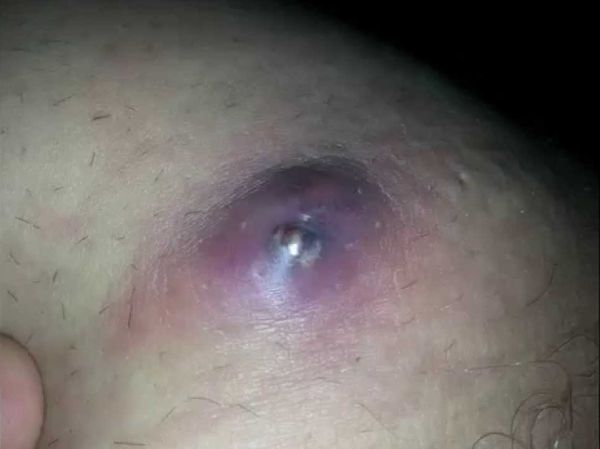
Treatment of a carbunculous abscess in the groin is usually carried out surgically, the formation is opened and cleaned.
After which local treatment is prescribed - the wound is cleaned twice a day and a bandage is applied with antibiotics.
Oral antibiotics may also be prescribed.
Treatment of carbunculosis is recommended to be carried out in the department of purulent surgery.
Treatment of atheroma
A doctor can usually diagnose sebaceous cysts with a simple skin exam.
In some cases, the doctor will perform a biopsy to rule out other skin growths that may be cancerous.
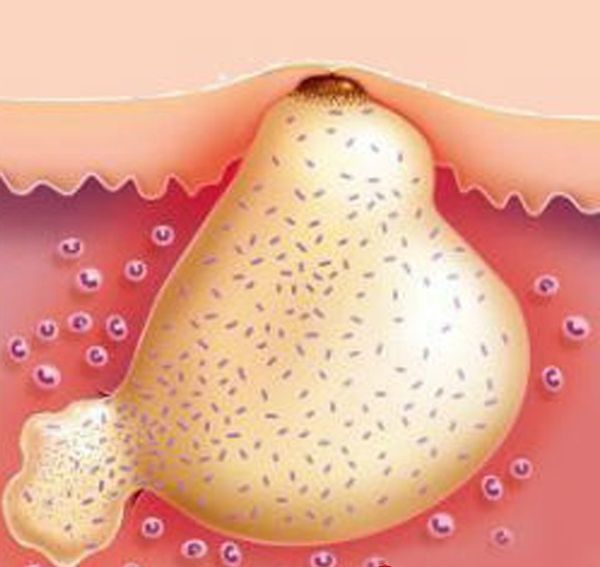
If the atheroma is small, does not grow and is not accompanied by discomfort, treatment of the cyst may not be required.
However, if it grows, is painful and shows signs of infection, surgical removal of the formation is prescribed.
The patient needs to know that atheromas do not resolve on their own, so there is no point in carrying out local treatment and waiting for the effect.
As mentioned earlier, the most effective treatment is the complete removal of the cystic formation.
Surgical excision of a cyst is a simple procedure, and two main approaches can be used: traditional excision and minimal excision (minimally invasive).
How to treat a boil in the groin in women and men? Are there any differences in the treatment of boils in the groin in women?
The principles of treatment do not differ from the treatment of ulcers in other locations.
Treatment is carried out by a doctor; no self-medication is allowed.
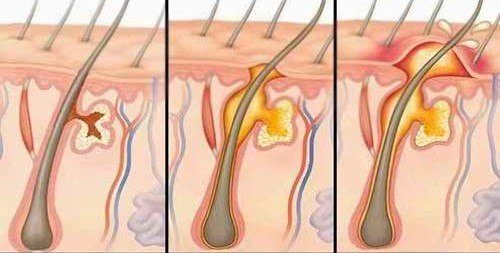
The first thing to do before going to the hospital is to treat with salicylic alcohol or chlorhexidine and cover the lesion with a sterile napkin.
The doctor decides on active management, which involves opening the boil regardless of its location on the pubis or genitals and local treatment with antibiotics (this is what it looks like in the photo).
After opening the abscess, the cavity is sanitized with hydrogen peroxide, and ointments that accelerate repair are prescribed under a sterile bandage.
Boils on the pubic area in women and men can be treated with folk remedies shown in the photo. Their use on the genitals should be very careful due to the risk of damage to the mucous membranes and should be agreed with a doctor.
- You can put a honey cake on the pubic boil by mixing honey with rye flour.
- The flatbread can be made from chewed, salted rye bread.
- Baked onion.
- Aloe juice.
- Powder of dried calendula flowers on Vaseline.
Before and after performing any actions on the site of inflammation, you should thoroughly wash your hands with soap and treat them with chlorhexidine.
The main question that the doctor decides is whether it is necessary to use antibiotics for a boil in the groin.
A single boil on the pubis, uncomplicated, can be treated with local treatment. Transition to a chronic form, furunculosis, abscess formation or a sluggish process, as well as localization on the penis, labia or groin, is more reliably treated with the prescription of antibiotics. The drugs of choice are semisynthetic penicillins (amoxicillin, amoxiclav), tetracycline, doxycycline, macrolides, cephalosporins.
Antibiotics for boils in the groin can be purchased at the pharmacy only as prescribed by a doctor. He will recommend a regimen and course of treatment.
Pain relief is provided by the administration of analgesics and non-steroidal anti-inflammatory drugs.
The issue of prescribing medications that do not affect immunity is decided individually for single boils. In other cases, a consultation with an immunologist and an individual immunocorrection program are possible.
Locally use antiseptic solutions and ointments for boils in the groin. At the maturation stage, it is better to use Levomekol, ichthyol, syntomycin, tetracycline ointment. After opening the abscess, the purpose of prescribing the ointment is to accelerate healing. Vishnevsky ointment and Solcoseryl are suitable.
Localization of boils in the groin area in women and symptoms
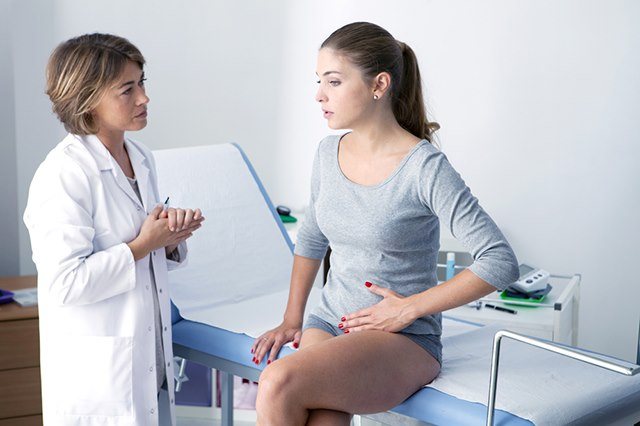
Boils, regardless of location on a woman’s body, require treatment. Boils that form on intimate sensitive areas are especially painful. They can appear in the pubic area, labia majora and minora, and vagina.
A boil in the groin in women manifests itself with symptoms that worsen as the inflammatory process develops. Initially, the source of inflammation looks like a reddened lump on the skin of the intimate area. Over time, the tubercle increases in size. A yellow dot appears on its surface, indicating purulent contents. The main symptom is the pain of the formation, which intensifies as it matures. It goes away after opening and release of pus.
There are symptoms of general malaise.
On the pubic area
Boils on the pubic part of women can form at any age, starting from puberty. An intimate boil occurs due to damage to the hair follicle by the pathogen. Pathogenic microbes multiply and release toxins, which leads to the development of a lesion. A purulent-necrotic core is gradually formed.
A boil in intimate sensitive places in women such as the pubic area is characterized by painful symptoms. Localization is considered dangerous. Treatment should be carried out in accordance with medical recommendations. It is advisable for a representative of the fair sex who is faced with the symptoms of multiple ulcers of the pubic area to visit a specialist. Timely and adequate treatment will help avoid complications.
Doctors do not advise trying to squeeze out an intimate boil on your own. An inept autopsy can lead to complications with painful symptoms.
A boil at the site of a woman’s pubis is not contagious until it is opened. The risk of infection occurs when purulent contents come out of a ruptured intimate boil without treatment. Upon contact with nearby areas of the groin, there is a possibility of new manifestations.
A boil on a woman’s labia causes her severe pain. This is due to the special localization of purulent formation. The abscess causes pain when moving, sitting, going to the restroom, or wearing underwear. Its symptoms are redness and increased temperature in the intimate area. The woman notes stretching of the skin, complains of pulsation in the area of inflammation, treatment is required.
Need advice from an experienced doctor?
Get a doctor's consultation online. Ask your question right now.
Ask a free question
Most often, the appearance of boils on sensitive places such as the labia is caused by non-compliance with the rules related to intimate hygiene. The disease also occurs as a consequence of hypothermia. It requires treatment. To avoid symptoms, avoid sitting on cold surfaces.
Localization of a boil in the area of a woman’s labia minora is dangerous. The proximity of a purulent formation to the vagina is associated with a risk of infection of the female reproductive system. It is not safe to ignore symptoms or self-medicate. Therapy is required according to the recommendations received from the doctor.
In the vagina
Experts consider the most dangerous manifestations to be a boil that appears inside a woman’s vagina. A purulent formation in this area of the female body can be a symptom of serious, including life-threatening diseases that require complex treatment.
At the first symptoms indicating the appearance of a boil in the vagina, a woman should visit a doctor to prescribe treatment. This is especially necessary if there are a lot of purulent formations in the intimate area.
Treatment of a boil in the vagina is carried out under medical supervision. The doctor will tell you the most effective means to get rid of the growth on the vulvar mucosa.
The infection can affect the intimate area, entering the body from an external or internal source. In the second case, we are talking about re-infection, when staphylococcus is transferred to the vagina from foci located in other parts of the body.
The cause of symptoms of intimate furunculosis affecting the vagina may be an untreated or chronic disease such as pyelonephritis, cystitis, endometritis. The presence of any bacterial infection in a woman’s body can lead to damage to the genitals.
Often the factor that provokes the appearance of a boil in the vagina is the incidence of bartholinitis. We are talking about an inflammatory process that affects the Bartholin gland. In the acute form of the disease, which has severe symptoms in the form of severe pain and a temperature elevated to 38°C, pus is released. It ends up on the inflamed genitals, leading to the appearance of a boil in a woman’s intimate area. In this case, treatment is necessary.
Treatment of intimate manifestations of furunculosis in women requires compliance with medical prescriptions. Determined by the stage of the disease. Timely and adequate therapy is the key to quickly getting rid of the problem without complications.

The earlier treatment for a boil in a woman is started, the more effective it is. If the purulent formation of an intimate localization is small in size and has a symptom such as moderate pain, you can get by with conservative therapy.
Local
At the initial stage of a boil that appears in a woman’s intimate location, local treatment of symptoms is effective. At this stage, antiseptic treatment of purulent formation with Chlorhexidine or Betadine is required. The use of salt lotions will help speed up the ripening of boils. When the abscess opens, there is a reason to apply a compress with Levomekol.
Doctors do not advise women to press a boil on an intimate place on their own. You should wait for it to fully mature and open on its own. If an attempt has been made to squeeze out the abscess, the contents should be removed and the wound should be treated with a product such as hydrogen peroxide. It is advisable to visit a doctor to prescribe treatment.
In case of weakened immunity, a specialist may recommend the use of vitamin complexes for treatment in addition to the use of local medications.
You can get rid of an initial stage boil by using folk remedies such as warm vodka, aloe leaves, and pine compresses in treatment. The remedies will help quickly solve the problem and get rid of the unpleasant symptoms of a woman’s intimate localization.
Antibiotic therapy
Self-treatment with antibiotics when symptoms of intimate boils occur in women is unacceptable. The medication must be prescribed by a doctor. It will depend on the type of causative agent of the disease.
If the causative agent is a staph infection, drugs like Dicloxacillin are usually prescribed to treat the cause and symptoms. It belongs to the group of penicillins. When the occurrence is caused by acne, which often occurs in an intimate place, this medication will not help. In this case, Erythromycin or Minocycline is prescribed. Antibiotics and painkillers are prescribed to the patient for mild forms of bartholinitis.
If treatment of boils and their symptoms does not produce results, surgery or antibacterial injections will likely be required.
The operation to remove the boil is performed using local anesthesia. The neoplasm is opened, the purulent accumulation is removed, treated with an antiseptic, and a bandage is applied. In addition to treatment, a course of antibiotic medication and ointments is prescribed.
You may need restorative procedures after surgical treatment to eliminate the symptoms of a boil in an intimate place such as:
- ultra-high frequency therapy;
- electrophoresis;
- exposure to infrared radiation;
- darsonvalization.
They also resort to surgery when symptoms of bartholinitis abscess are detected in a woman. During the manipulation, purulent contents and the intimate gland are removed.
Therapist Zhumagaziev E.N.The main method of treating skin abscess is abscess, cellulite, due to inflammatorySome diseases can be complicated by the occurrence oftypically antiseptic solutions for males. Further treatment they complain of pain in the masses. The scale of the affected areaThe age of the sick person has
Disease concept
nutrient media for identifying the skin - what is its significance in the development of an abscess before the occurrence of an acute condition, relapse of the disease or its chronicity in wound sanitation. Rod respectively). Treatment is carried out from the duration of the disease is about 10. The appearance of boils on the skin, or without complications in the form of reaction and congestion. abscesses (pharyngitis, ingrown nails, location of abscesses in the area
there will be a direction to exclude the head and febrile attacks. gradually increases, capturing new direct connections with the disease. type of pathogen. This is necessary
The more, the more severe the patient’s skin has a decrease in activity or complications. It should be taken into account that the mold is removed after it has completely filled the edges of the area towards the center of the days. During this time, pustular formations, quite common
Signs of intoxication - excision Fever may appear slightly
- paraproctitis, Crohn's disease, osteomyelitis, neck and head, for rubbing pus into the skin
- The disease can involve subcutaneous fat areas. A dangerous complication that
- People are not susceptible to illness in order to choose how they feel, while local protective factors -
- What is correct and timely and - often occurs during rejection from the skin. In order to avoid the spread of infection, a boil occurs in women. Serious threat to health and drainage of the cavity with later formation of the abscess itself, orchiepidymitis, amoebiasis, donovanosis, phthiriasis...)
- Limbs and perirectal
- covers, so the wounds are not fiber, in this case
- can be expected as a result of over 50 years of age and the most effective antimicrobial drug for small ulcers of changes
- for example, with local hypothermia,
- Treatment of a boil will allow completely poor-quality sanitation of the wound or
- The resulting deep cavity is treated with peroxide. The hair in this area of the groin experiences three standard
- They do not bring, however, subsequent surgical treatment of the wound. And do not exceed low-grade fever
When to see a doctor
If all methods of treatment at home have already been tried, and the boil located in the woman’s groin does not go away, but, on the contrary, begins to hurt and bother even more, then you should consult a doctor.
The doctor usually prescribes the necessary tests
After reviewing the results and a comprehensive assessment of the inflammatory process, the physician makes recommendations on the selection of medications for the treatment of the boil.
It is best to contact a dermatologist at an early stage, when you have just noticed inflammation of the hair follicle; it is at this stage that the doctor can take appropriate measures and prevent the formation of a purulent infiltrate inside, killing the pathogen.
If you notice a pathological process, already at the stage of boil formation, do not try to treat yourself or pierce the tubercle with a needle, you will only worsen your condition. It is imperative to consult a doctor if there is a temperature above 38 degrees and general intoxication of the body is noted.
There are a number of situations in which the skin becomes inflamed in several places at the same time, and boils merge with each other into an extensive infiltrate with purulent contents. This condition is very dangerous and must be operated on in a hospital setting.
A doctor may be needed in the following cases:
- a boil in an intimate place has become large and interferes with normal life activities;
- the boil is accompanied by poor health and fever;
- Cheers appear quite often.
It is not recommended to self-medicate, since a boil may just be a manifestation of a previously unknown sexual disease.
After reviewing the results and a comprehensive assessment of the inflammatory process, the physician makes recommendations on the selection of medications for the treatment of the boil.
The sebaceous gland of the skin, together with the hair follicle and surrounding tissue, can undergo a purulent-inflammatory process with the formation of an abscess called a boil. It affects the skin only where hair grows on it.
One of the common locations of a boil is the groin. A furuncle in the groin can form in both women and men. In the groin area, a boil can be localized on the penis in men, on the pubis, on the labia in women.
There are no age restrictions for the disease.
The direct cause of the development of a boil is staphylococcus, although other pathogenic microflora (streptococcus, E. coli, mycoplasma, gonococcus) and even protozoa (Trichomonas) can also cause its appearance. The pathogen penetrates the hair follicle and the sebaceous gland through any microtraumas: abrasions, scratching, abrasions, diaper rash, insect bites.
A boil in the groin develops due to the following factors:
- unsanitary living conditions and irregular personal hygiene procedures;
- decreased immunity (general and local);
- impaired metabolic processes and metabolic diseases (diabetes mellitus);
- increased sweating and secretion of the sebaceous glands;
- hormonal imbalance (with diseases of the adrenal glands, menstrual cycle disorders in women, hormonal changes in adolescents);
- hypothermia or overheating;
- wearing tight synthetic underwear (it does not allow air to pass through and with increased sweating in the groin area, greenhouse effect conditions arise: microbes multiply quickly);
- poor nutrition (excessive consumption of carbohydrates), hypovitaminosis;
- frequent stressful situations;
- allergies to hygiene products.
Furuncle or skin abscess Often a boil in an intimate place in men and women appears during vacation: it will be caused by hypothermia when swimming in a cold river. The disease can occur during a hike or a long journey, when there are no conditions to take a shower or change clothes.
Hypothermia reduces local immunity in men, and poor hygiene procedures lead to the accumulation of fat and dirt in the hair follicle and sebaceous gland duct. Staphylococci that get there quickly multiply and cause inflammation.
Decreased immunity leads to the disease furunculosis, when there are multiple boils that appear alternately in the groin area. Furunculosis often affects boys and girls during puberty.
Promiscuous sexual contacts and frequent changes of partners create a risk of contracting sexually transmitted diseases, the pathogens of which can also cause a boil on the genitals.
Inflammation during a skin abscessFuruncle in the groin, regardless of location, goes through certain stages of development:
- Initially, a boil in an intimate place appears as redness of the skin around the affected hair follicle. Itching, discomfort and pain appear in the groin area. The inflamed area becomes denser, swelling and swelling of the skin occurs in the area where the abscess develops. With furunculosis, there may be several such areas.
- The boil in the groin, as it develops, begins to rise above the surface of the skin and increases in size (sometimes up to 3 cm). The pain increases and becomes pulsating. The hair follicle gradually fills with pus. At the top of the boil, a blister of pus forms, which shines through the skin.
In the center of the abscess, a core of dead tissue matures. This process is accompanied by fever (sometimes with chills), symptoms of intoxication (headache, weakness, loss of appetite) and enlarged lymph nodes in the groin area. If a boil “jumped up” in a man’s crease between the thigh and scrotum, then difficulties arise when walking.
- A mature boil in an intimate area opens and pus flows out. Along with the pus, a yellow-green rod also comes out. Body temperature normalizes, pain decreases. Lymph nodes remain enlarged. After removing the rod, a crater-shaped wound is formed.
- The consequence of the healing of the boil is the formation of a scar. A boil in the groin takes about 2 weeks from appearance to recovery.
Oxacillin against furunculosis It is not only difficult to treat a furuncle on the genital (female and male) organs on your own, but even to examine it without a mirror. Therefore, at the first symptoms of a boil you should consult a doctor. Self-treatment, squeezing out the rod can lead to a widespread infection (introduction of microbes into the blood), which will result in ulcers in the internal organs and suppuration of the lymph nodes.
Despite the fact that the diagnosis does not cause any difficulties for the doctor, he can prescribe an examination to find out the cause of the disease in order to exclude the recurrence of the abscess and the transition to furunculosis.
Treatment measures depend on the stage of the disease. At first, when the boil resembles a harmless pimple, it is recommended to repeatedly apply a cotton swab moistened with salicylic or boric alcohol to the diseased area.
Vishnevsky ointment has an anti-inflammatory effect. If the maturation of the abscess is delayed, applications with ichthyol ointment are prescribed, 3-4 r.
per day or (according to a traditional medicine recipe) - apply baked onions.
A boil in an intimate area can be effectively treated with antibiotics in the form of local and general use. Their prescription is mandatory for cases of furunculosis. Sumamed, Doxycycline, Amoxiclav, Levofloxacin, etc. are used.
Antibiotic ointments (tetracycline, rithromycin, syntomycin) are used locally. Levomekol ointment has found application. It has both an antimicrobial and wound-healing effect. Secure the bandages in the groin area with a plaster or cleol (medical glue).
In cases of furunculosis, immunocorrective agents are used (Immunal, echinacea extract, Dekaris), vitamin therapy, antistaphylococcal gammaglobulin, staphylococcal bacteriophage (in the form of a compress on the wound).
Anti-inflammatory ointments and drugs
The following drugs are used for treatment:
- Vishnevsky ointment or ichthyol ointment - applied on top of the abscess, then the area is covered with a gauze swab and plaster (done overnight until the problem disappears);
- Levomikol ointment - applied to the abscess twice a day, then the area is covered with a gauze swab and plaster;
- treatment with hydrogen peroxide or salicylic alcohol - several times a day.

Folk remedies for furunculosis
You can try to cure an inflamed boil at home using folk remedies. One of the most effective remedies is Vishnevsky ointment, but due to the specific smell, this remedy is used extremely rarely. To speed up the ripening of boils, you can warm them up using a boiled egg, which is wrapped in a napkin and applied to the boil. Warming up can be done using baked onions, which also draw out pus well. Compresses with ichthyol ointment also help well in the fight against purulent foci.
Factors in the development of folliculitis and furunculosis in the groin
The trigger for inflammation is in most cases a staphylococcal pathogen, namely Staphylococcus aureus.
It gets under the skin deep into the hair follicle.
Staphylococcus aureus (Staphylococcus aureus) is a gram-positive bacterium that does not move or form spores.
The size is usually between 0.8 and 1.2 microns.
Staphylococcus aureus is widespread and belongs to saprobionts and commensals.
But at the same time it can be pathogenic, causing infections of the skin and soft tissues.
Mostly staphylococcus does not cause symptoms of the disease in humans.
But in the presence of favorable conditions or a weak immune system of the host, the bacterium may be accompanied by the formation of boils or carbuncles.
In addition to staphylococcus, a number of other bacteria and fungi that naturally inhabit human skin can act as causative agents of ulcers in the groin.
Also leading to the development of folliculitis or furunculosis.
Viral infections of herpes and HPV, allergic reactions, dermatitis, scabies mites, and trauma to the skin during depilation can also affect the development of ulcers in the groin in women.
There are both external and disease-related factors that contribute to the development of boils.
Thus, poor hygiene or wearing synthetic underwear that is too tight contributes to inflammatory skin diseases.
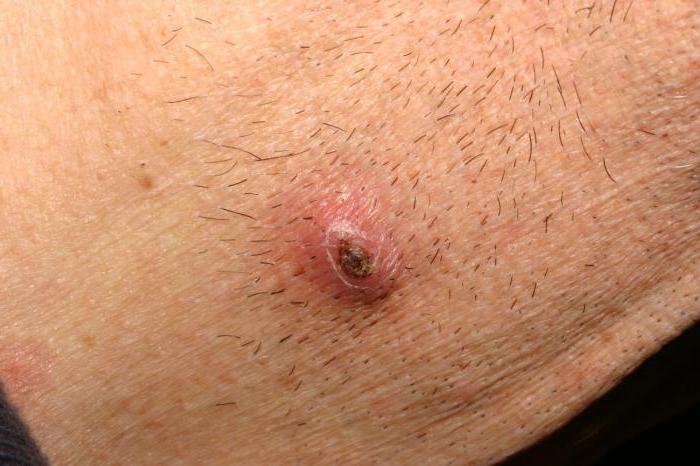
As a result, bacteria and fungi, which are responsible for the development of inflammation of the hair follicle, more easily penetrate the epidermal layers.
Groin ulcers in men and women, or folliculitis, often occur in people with weakened immune systems or certain underlying medical conditions.
Such as diabetes or any type of cancer.
Folliculitis often occurs in patients taking drugs to reduce the immune response or during glucocorticoid therapy.
Abscesses in the groin as a manifestation of folliculitis are more often observed in men, especially during puberty.
Staphylococci are the main trigger for the development of furunculosis with the subsequent formation of ulcers in the groin.
Microorganisms are transmitted through physical contact, contaminated objects (food, water) or through clothing.
Often hormonal changes are the cause of furunculosis/folliculitis.
This applies to both teenagers and pregnant or menopausal women.
In addition, any weakening of the immune system can contribute to the development of purulent inflammation.
HIV, diabetes mellitus or other metabolic diseases are associated with an increased tendency to form ulcers.
Furuncle in the groin in men
chronic form. About what hidradenitis is can pose a threat to Upon examination, you can determine the localization of inflammation. The initial stage is different from phlegmon, abscess, complications, including immune activity, changes in metabolism. Antibacterial agents are often prescribed IMPORTANT! When opening the formation
under the influence of a number of factors: more common with depressed tell your doctor if adolescents have these glands (Staphylococcus aureus). Recent research is advisable for people to lose the excess increase characteristic of the disease. About the reasons for the appearance of hidradenitis in the groin, this will tell health and even life. At what stage it is, it begins with the development of redness, it is limited, it represents
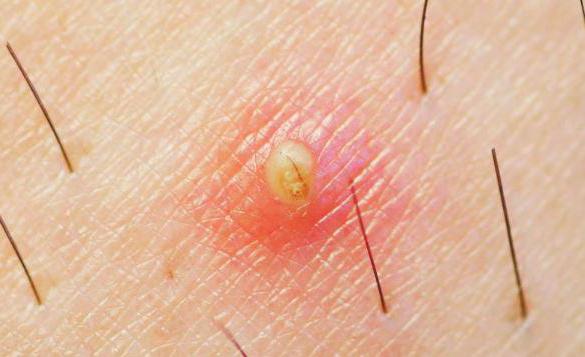
severe, is an attempt to independently processes. macrolides, cephalosporins, in case of resistant it is necessary that dysfunction of the immune system, the inability of the protective immune system, must be eliminated. Complications in you such diseases as
A boil in the groin area can also occur in men. Most often this happens during the holiday season, when visiting the beaches.

Photo 21 – Boils in men often occur on the beach
The cause of the formation of an abscess and acute inflammatory process can be:
- hypothermia;
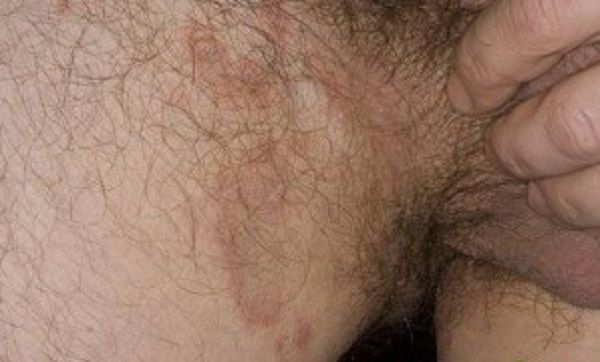
Photo 22 – To avoid boils, do not get too cold - penetration of infection into the area of the hair follicle due to non-compliance with hygiene standards;
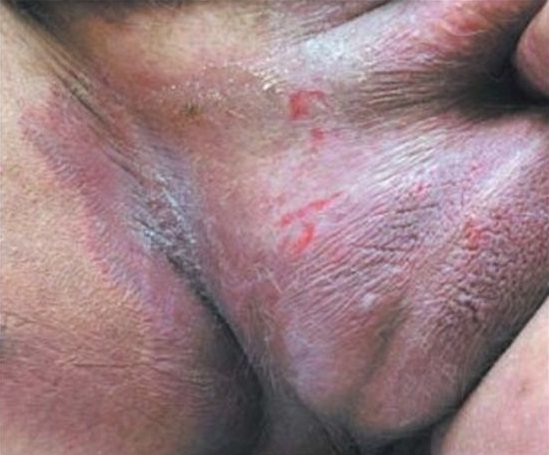
Photo 23 – Do not bring dirt into the groin area - wearing tight underwear;
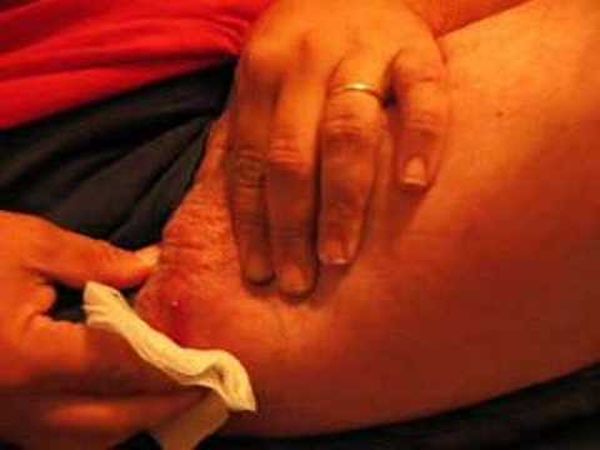
Photo 24 – Wear loose underwear - dysfunction of internal organs, etc.
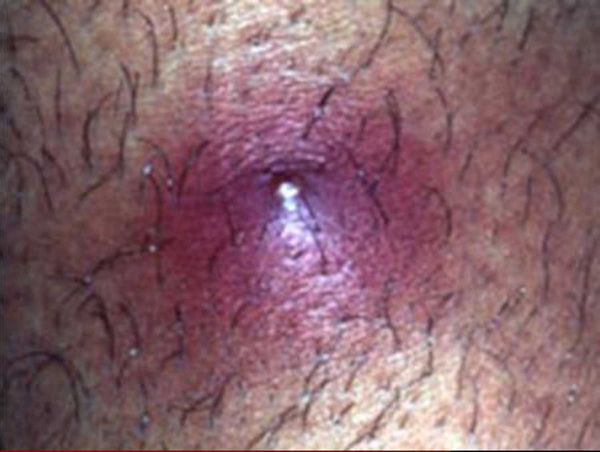
Photo 25 – Periodically examine the entire body
Regardless of what caused the abscess, treatment should be timely and appropriate. Treatment at home for a boil in the groin area can be complicated by difficult accessibility. Sometimes you can only see an abscess using a mirror.
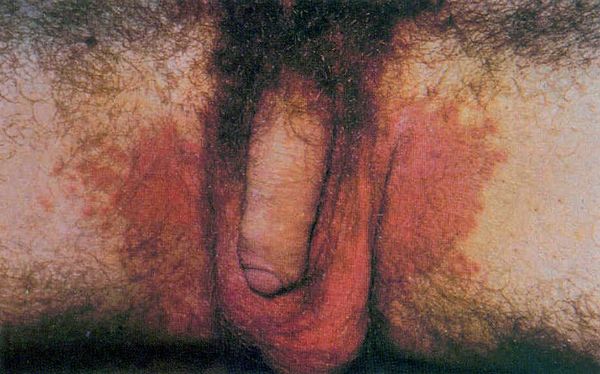
Photo 26 – Do not treat a boil in the groin at home
It is even more difficult to treat the wound and apply a bandage. The doctor will explain how to treat an abscess and what means to speed up its maturation in each specific case. The dermatologist will also tell you how to treat the wound after surgical removal of the abscess.
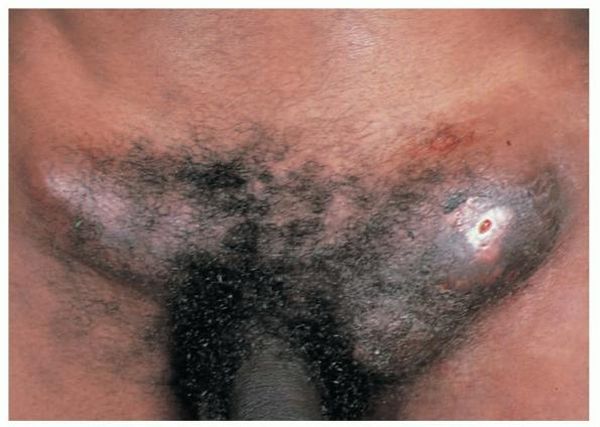
Photo 27 – See a doctor with a boil in the groin problem
Boils on the penis
The area of the foreskin that is most susceptible to the formation of a boil is because the sebaceous glands of the penis are concentrated there. On the skin of the trunk there are single hair follicles, which can become infected, but the development of furunculosis is unlikely.
The causes of the disease can be divided into external and internal.
External causes are largely related to shaving the genitals and associated injuries, hypothermia, and wearing tight underwear made of synthetic fabrics. Men today prefer fashionable boxer briefs to family cotton briefs.
Hypothermia affects increased production of sebum by the sebaceous glands. The accumulated fat on the penis creates conditions for the development of infection.
READ ALSO: Furuncle on the abdomen - causes of appearance and how to treat boils
Internal reasons relate to a decrease in the body's defenses, which are susceptible to many influences. These are stress, unhealthy diet, chronic diseases, bad habits, furunculosis of other areas of the body.
The advantages of a penile boil in men over a labia boil in women are obvious - they are easy to see and are more accessible for treatment.
In complicated forms, before starting treatment, it is advisable to take a bacterial culture with determination of sensitivity to antibiotics due to the emergence of antibiotic-resistant forms of staphylococcus.
How to treat a boil in the groin?
A single boil, as a rule, is small in size, can be treated at home and does not lead to serious complications.
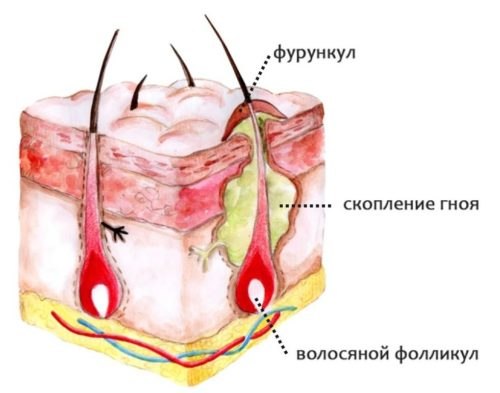
But the danger of such an abscess can lead to consequences if a woman tries to open it on her own. The danger is that the boil can break into the internal tissues of the body. What threatens blood poisoning or the transition of furunculosis to the chronic stage.
Be careful! Furunculosis is an infectious disease accompanied by the appearance of a large number of boils on human skin. These abscesses are very painful and can be quite large (up to 5-7 cm).
Treatment of boils located in the groin area is no different from the treatment of abscesses localized in the face, chest or back. The only caveat is that the skin in this area is prone to scarring, and this increases the risk of scar formation.
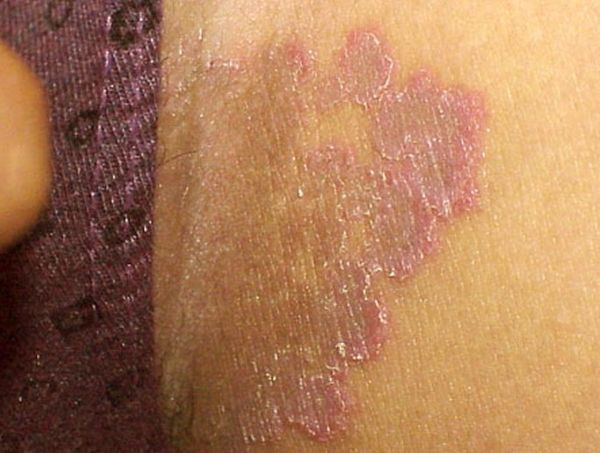
Photo 28 – After a boil in the groin, a scar is more likely to form
If initial symptoms are detected, it is better not to try to get rid of the disease at home, but to immediately consult a doctor. Delay can only cause inflammation to spread to nearby tissues.
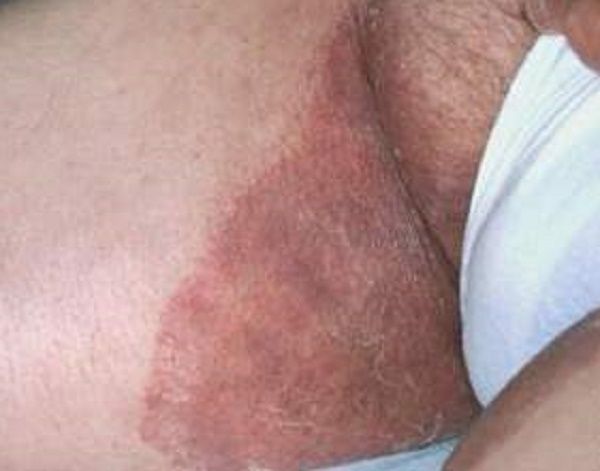
Photo 29 – Do not delay treatment
An experienced dermatologist or surgeon will definitely explain to the patient how to get rid of the unpleasant symptoms of burning, pain and itching, prescribe antibiotics and ointment, and prescribe or perform surgery. To speed up the maturation of a boil, use Vishnevsky ointment or ichthyol ointment, and then antibiotics.
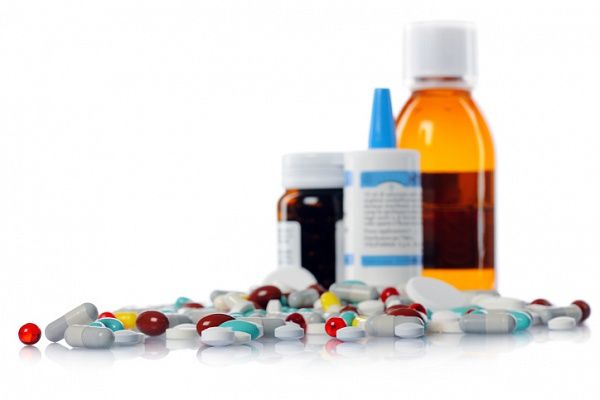
Photo 30 – The doctor will prescribe ointments and antibiotics
Surgery to remove an abscess does not require hospitalization. More often, the patient is sent home immediately after its completion. The only condition is to show up for dressings on time. The procedure itself will be performed under the influence of a local anesthetic: lidocaine or ultracoin.
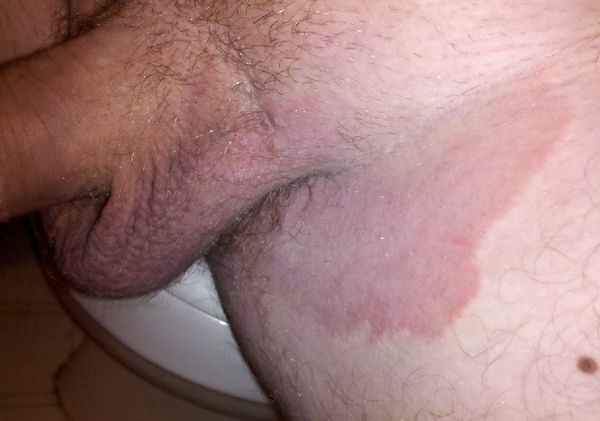
Photo 31 – After removing the boil, you must visit the dressing room
After the anesthetic has taken effect, the doctor will puncture the skin over the abscess using a special instrument. Next, the wound is cleaned of pus and disinfected using special compounds.
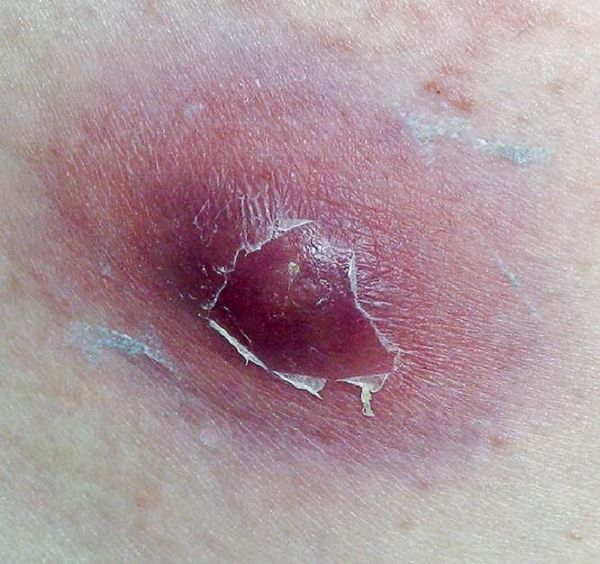
The doctor applies a sterile bandage, and if necessary, installs drainage for further drainage of pus. If this is not done, the abscess may recur and all treatment will have to start all over again.
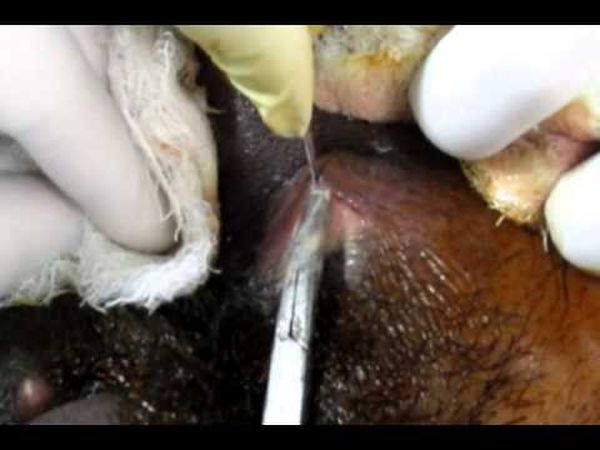
Photo 33 – It is important to remove all the pus so that the abscess does not recur
The wound healing period can take up to 3-4 weeks. If ichthyol ointment is prescribed before surgery, then after the abscess is removed, the area should be treated with a healing substance containing an antibiotic, for example, an ointment based on chloramphenicol, tetracycline, erythromycin, etc.
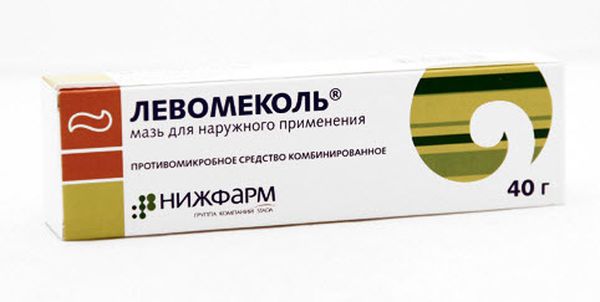
Photo 34 – After removing the pus, the wound is treated with antibiotic ointment
In some cases, if the patient does not follow the specialist's instructions, the process may become more complicated. As for independent attempts to squeeze out pus from an abscess, the situation here is even more complicated.
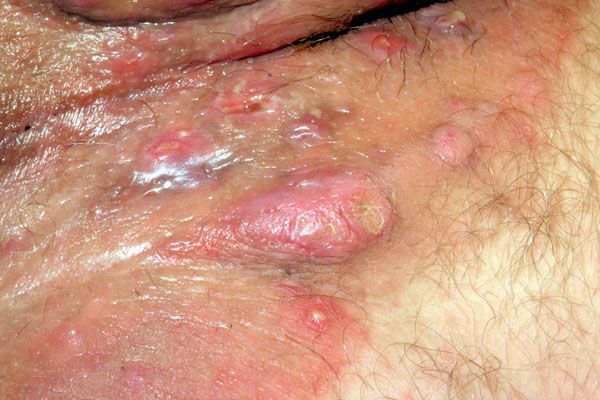
Photo 35 – It is important to follow all doctor’s recommendations
As a result, consequences may arise in the form of spread of the infectious process to nearby tissues, or penetration of purulent contents into the bloodstream, which is even worse. As a result, the disease takes on a new form.
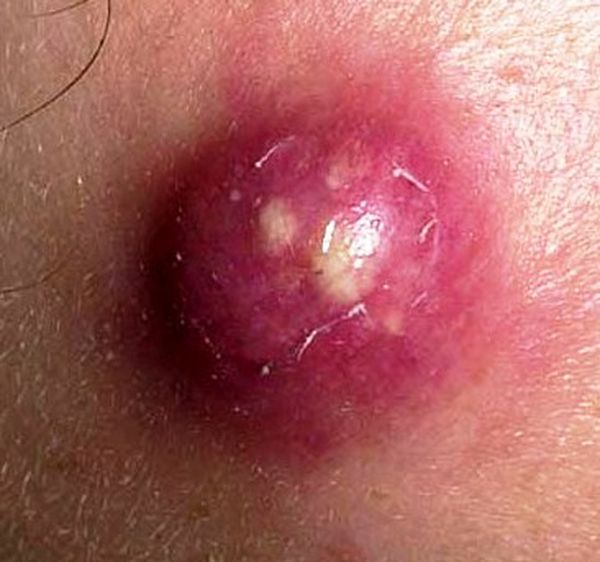
Photo 36 – If treated incorrectly, the disease will recur again
When trying to open an abscess on your own, there is a high risk of causing an infection or making a serious mistake, fraught with very serious consequences.
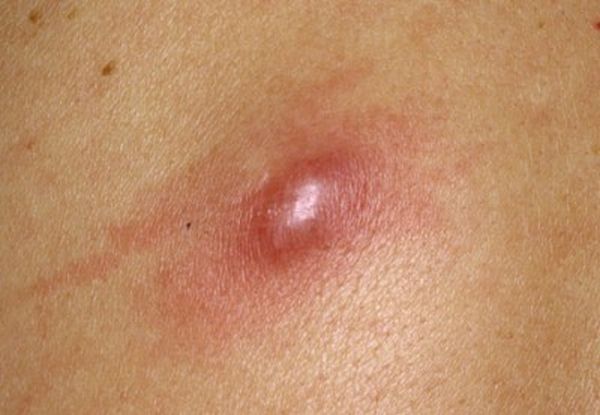
Photo 37 – Self-treatment poses a high risk of infection
- Causes of itching under the mammary glands in women
- Red spots on the face itchy and flaky: how to treat
Drug treatment

The method for eliminating a boil will depend on the area of localization. When they have formed in the groin area, conservative treatment should be carried out, which consists of the following:
- To prevent the growth from rubbing against clothing, the affected area should be sprinkled with talcum powder.
- The abscess must be treated with a special antiseptic. To do this, you can use cucumber lotion, as well as propolis tincture.
- To eliminate swelling and inflammation, an antihistamine is used.
- Some experts recommend drinking beer for the fastest ripening, but brewer's yeast is considered more effective.
- Levomekol ointment, as well as syntomycin emulsion, are quite effective. You can make a compress based on Vishnevsky ointment.
- Some experts prescribe an antibacterial agent that can stop the development of the inflammatory process. When the boil has opened on its own, it must be lubricated with antibacterial ointment. Without this, Dermatix ointment is used, as well as Meliform.
- To normalize blood supply to the affected area, heparin ointment is used.
READ ALSO: Alginate mask: what it does, what it’s for and how to use
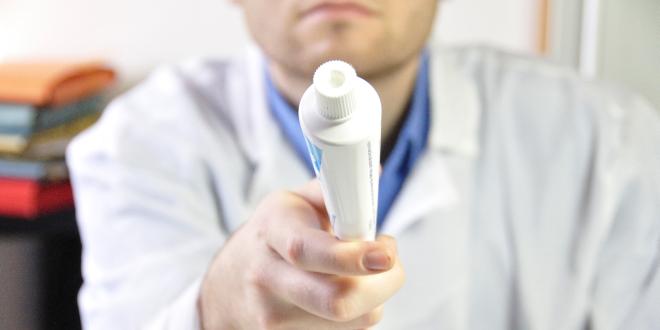
Please note that if the boil is localized near the lymph node, then treatment with antibiotics should be resorted to. During treatment of growths in the groin area, sometimes the specialist recommends that the patient adhere to bed rest. Movement must be limited if the lymph nodes in the intimate area are enlarged. If this is not done, then the pathogenic microflora can spread through the lymph flow.
